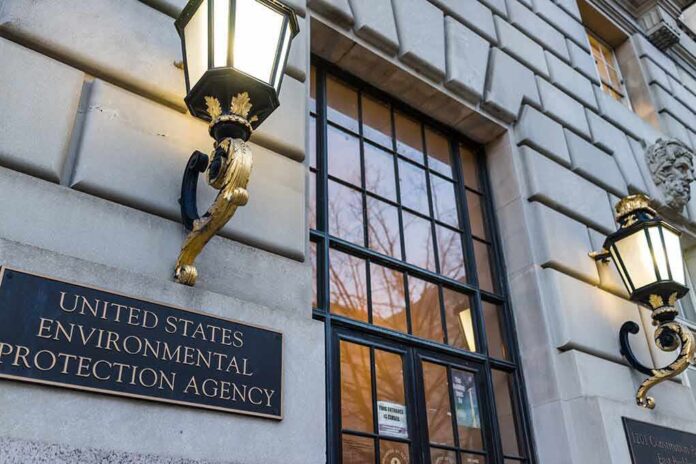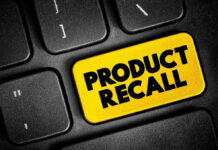The EPA bans cancer-causing chemicals commonly used in dry cleaning and manufacturing, marking a significant shift in public health safety measures.
At a Glance
- EPA bans trichloroethylene (TCE) and restricts perchloroethylene (Perc) due to cancer risks
- TCE, found in cleaners and lubricants, linked to various cancers and system damage
- Perc, used in dry-cleaning, associated with multiple cancer types and organ damage
- Bans align with Biden’s Cancer Moonshot initiative to combat cancer
- Safer alternatives available for most uses of these chemicals
EPA Takes Action Against Harmful Chemicals
The Environmental Protection Agency (EPA) has taken a bold step to protect public health by banning two solvents known for their cancer-causing properties: trichloroethylene (TCE) and perchloroethylene (Perc). This decision comes as part of a broader initiative to regulate long-used chemicals that pose risks to consumers and the environment.
TCE, commonly found in cleaners, spot removers, lubricants, and glue, has been linked to liver cancer, kidney cancer, non-Hodgkin’s lymphoma, and damage to the nervous and immune systems. The chemical has been a concern for decades, with its presence detected in drinking water sources nationwide. Perc, primarily used in dry-cleaning and automotive-care products, can cause liver, kidney, brain, and testicular cancer, as well as damage to various organ systems.
EPA bans 2 chemicals in dry-cleaning products known to cause cancer https://t.co/UA0qAkldPW
— Live5News (@Live5News) December 9, 2024
Implementing the Ban and Its Implications
The ban on TCE and Perc is being implemented under the Toxic Substances Control Act, which was strengthened in 2016 to give the EPA more authority to regulate harmful chemicals. While the ban on TCE is comprehensive, the restrictions on Perc allow for certain industrial uses, such as in aviation and defense, provided strict worker protection rules are followed.
“It’s simply unacceptable to continue to allow cancer-causing chemicals to be used for things like glue, dry cleaning or stain removers when safer alternatives exist,” said Michal Freedhoff, EPA’s Assistant Administrator for the Office of Chemical Safety and Pollution Prevention.
The EPA’s final rule includes stringent worker protections and a Workplace Chemical Protection Plan for remaining uses of these chemicals. This move aligns with President Biden’s Cancer Moonshot initiative, aimed at ending cancer as we know it. The administration has also proposed funding in the Fiscal Year 2025 budget to support small businesses transitioning to TSCA-compliant practices.
Historical Context and Future Implications
The ban on these chemicals is not just a present-day concern but addresses historical contamination issues as well. The toxic effects of TCE were highlighted in the book and movie “A Civil Action,” bringing public attention to the dangers of chemical contamination in water supplies.
Massachusetts Senator Ed Markey had this to say: “Over 40 years ago, a mother named Anne Anderson from Woburn, Massachusetts, approached me and started a crusade to keep any more children like Jimmy Anderson, her son, from dying from cancer caused by toxic chemicals. Anne’s work directly led to this announcement from the Environmental Protection Agency that I am overjoyed to celebrate today alongside her and every community that stands to benefit—a finalized ban on trichloroethylene and most uses of perchloroethylene, two chemicals that cause cancer, affect reproductive systems, are neurotoxic, and compromise immune systems.”
The EPA’s decision also addresses long-standing contamination issues, such as those at Camp Lejeune, where servicemembers and their families were exposed to these chemicals through contaminated drinking water. This ban represents a significant step forward in protecting both current and future generations from the harmful effects of these toxic substances.
As the industry adapts to these new regulations, the EPA has committed to providing compliance guidance and will host a public webinar on the PCE rule. This proactive approach aims to ensure a smooth transition for businesses while prioritizing public health and environmental safety.
Sources:
- https://www.msn.com/en-us/health/other/epa-bans-cancer-causing-chemicals-commonly-used-in-dry-cleaning/ar-AA1vxVS8?ocid=msedgntp
- https://www.nytimes.com/2024/12/09/climate/epa-dry-cleaning-chemical-ban-perc-tce.html
- https://www.epa.gov/newsreleases/biden-harris-administration-announces-latest-actions-under-nations-chemical-safety-law
- https://www.medscape.com/s/viewarticle/feds-take-aim-dry-cleaning-chemicals-red-dye-no-3-2024a1000n2h?src=rss











